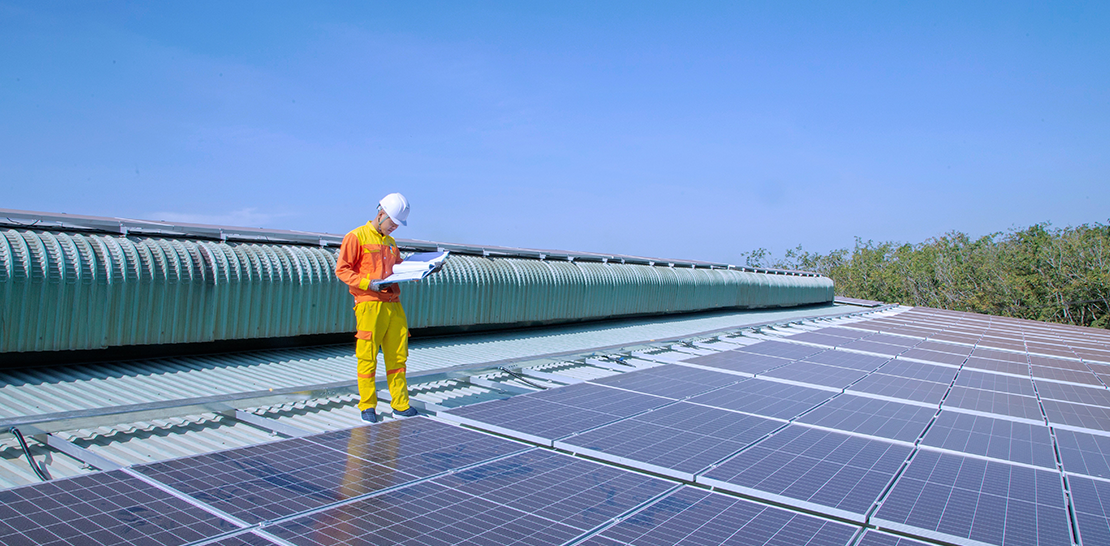How Data Visualization is Redefining the Energy Sector
.png)
Written by Virtualitics
Oct 12, 2021 7:04:00 AM

Like many industries, the energy sector is undergoing widespread digital transformation. As more power and utility providers adopt artificial intelligence, IoT, and other smart technology to support their business lifecycles, data analytics is becoming an essential part of managing the modern energy infrastructure.
But analytics alone can’t provide the insight needed to drive action. Organizations must take their data and present it in a way that is both understandable and usable to everyone, not just data scientists.
Data visualization bridges this gap and helps the energy sector embrace digital transformation by redefining how businesses, stakeholders, and customers are able to use their data to meet their respective end goals.
What Is Data Visualization?
Traditional data analytics rely on flat, two-dimensional data representations and provide limited insight into the real relationships within an organization’s structured and unstructured data.
Today’s data visualization tools, however, take that structured and unstructured data from multiple sources and compile it into a visual representation that can be used to tell your data’s story in a clear, concise, and easy-to-understand way.
Data visualization makes it possible to determine which variables have the greatest impact on the target data, as well as pinpoint trends, patterns, and outliers in the data. This information can then be used to drive decision-making, increase efficiency, and predict performance problems before they become big, expensive issues.
How Data Visualization Is Driving Change in Today’s Energy Sector
In the energy sector, data visualization enables a wide variety of use cases, but there are five areas in particular where taking a visual approach to understanding data insights has a huge impact:
1. Forecasting Load and Demand
In the energy sector, businesses expend a lot of effort trying to match available power supply with energy demand. Data analytics is an essential part of this load management and demand forecasting process, but it must be done well to be valuable.
Poor-quality data or lack of visibility into trends makes it difficult to accurately predict actual needs, leading to wasted resources and unhappy customers. Data visualization provides in-depth insight into past usage and demand levels, allowing energy providers to make informed projections based on actual data trends.
2. Isolating the Root Cause of Performance Issues
Data analytics may be able to show that a performance problem exists, but it doesn’t provide the “why” behind the issue. Although it is important to identify broken systems and components, if operators can’t determine the root cause, it’s likely that the issue will reoccur.
Data visualizations incorporate data from multiple sources and provide insight into which variables are likely contributing to breakdowns and inefficiencies. Using this “whole picture” approach to pinpointing performance issues helps minimize the amount of time maintenance teams spend looking for the cause so they can make repairs quickly and prevent reoccurrence.
3. Predicting Equipment Failures And Maintenance
Unplanned downtime and unscheduled maintenance cost companies both time and money.
AI routines and machine learning can be used to create data visualizations that accurately predict which systems are likely to fail and when. This information can be used to schedule proactive maintenance and replacement of at-risk components to reduce downtime and prevent outages.
4. Improving Stakeholder Communication
Not every stakeholder and decision maker in an organization is a data scientist, but they still need to be able to understand and explain to others what the data is showing. Energy and utility companies tend to have multiple sites distributed across a wide region, which makes efficient communication and collaboration even more important.
Data visualization allows even non-data professionals to easily extract actionable insight from data, then use the visualizations to engage and inform other team members across geographies.
5. Increasing Customer Satisfaction
Smart metering allows energy and utility companies to collect customer data from multiple sources, which allows them to closely analyze customer behavior and resource usage.
This data can be combined with additional metrics, such as weather patterns and time, then used to create a multidimensional visualization that allows analysts to examine the data from many angles. This level of visibility helps the utility company identify inefficiencies, provide more targeted customer service, set customer expectations based on real data, and resolve issues faster.
Many industries are undergoing rapid digital transformation, but the energy sector in particular is poised to see huge returns on its data analytics technology investments. Data visualization helps energy and utility providers quickly identify where they can improve process, productivity, and maintenance efficiencies with high ROI potential.
Find out more about how the energy sector benefits from new data analytics and visualization techniques on our comprehensive page, Data Visualization in the Energy Industry.
